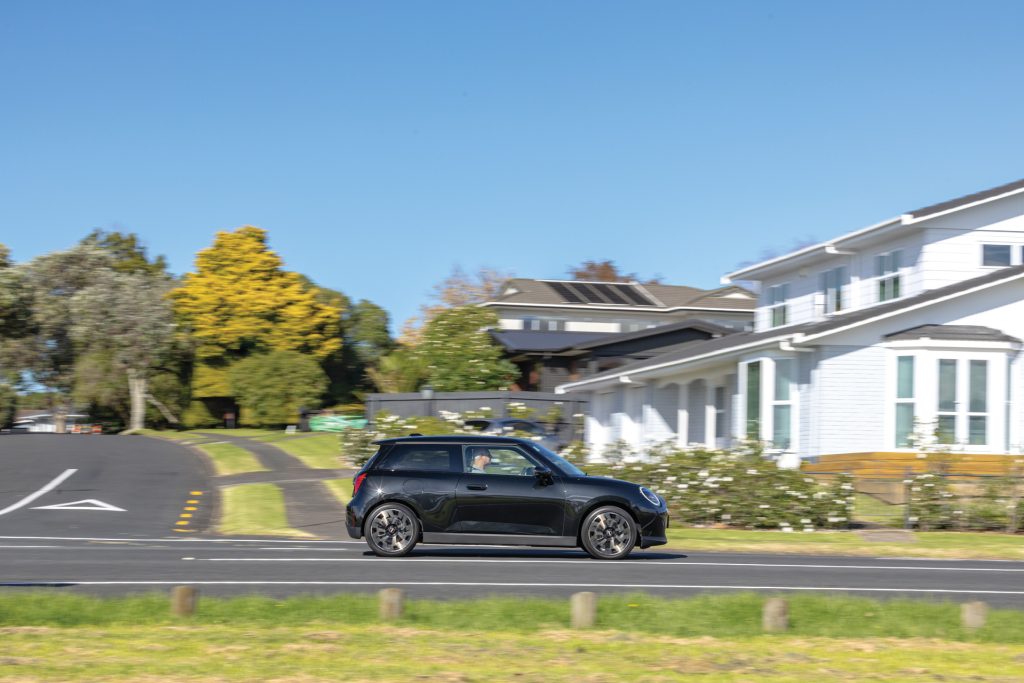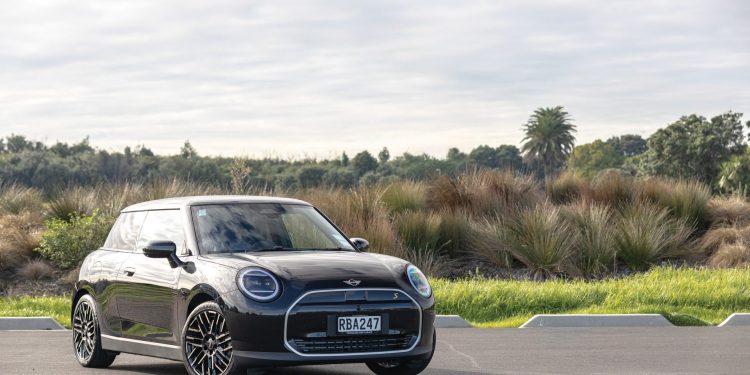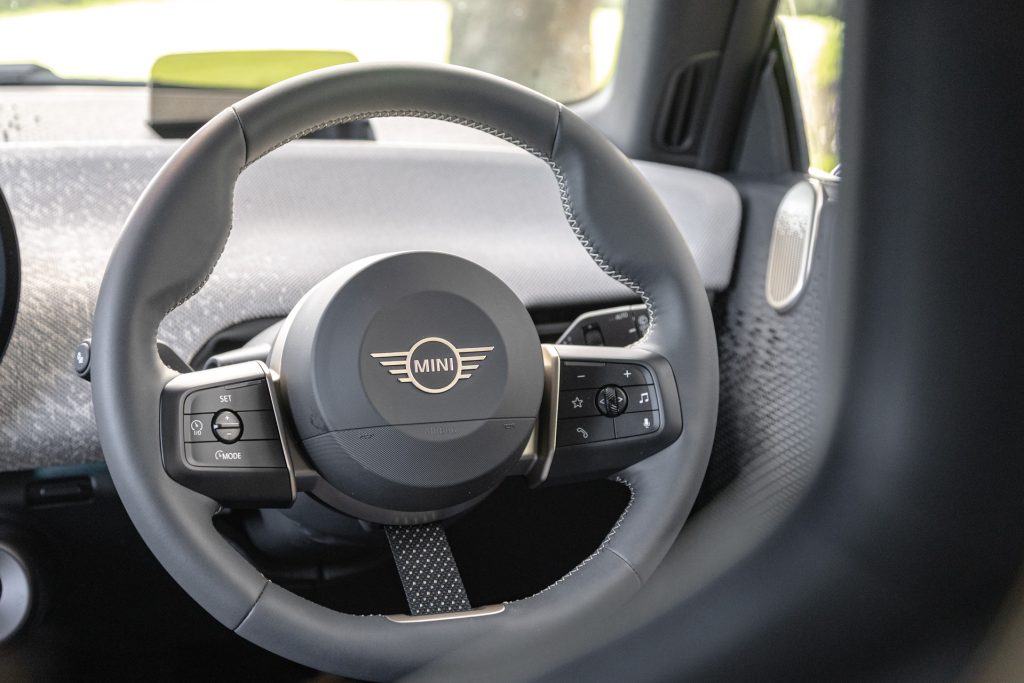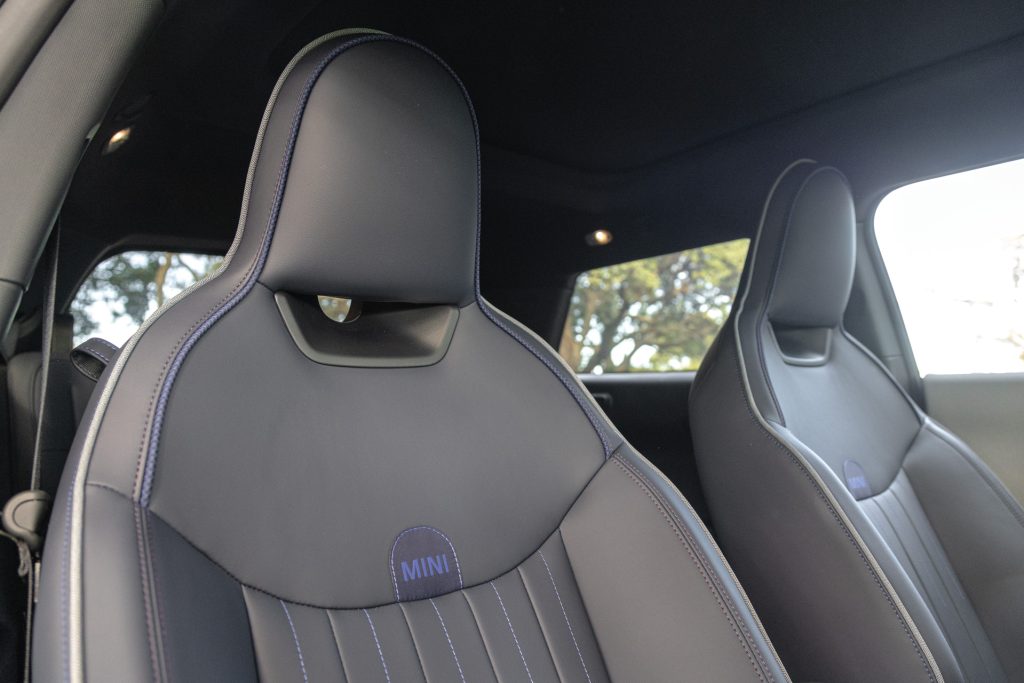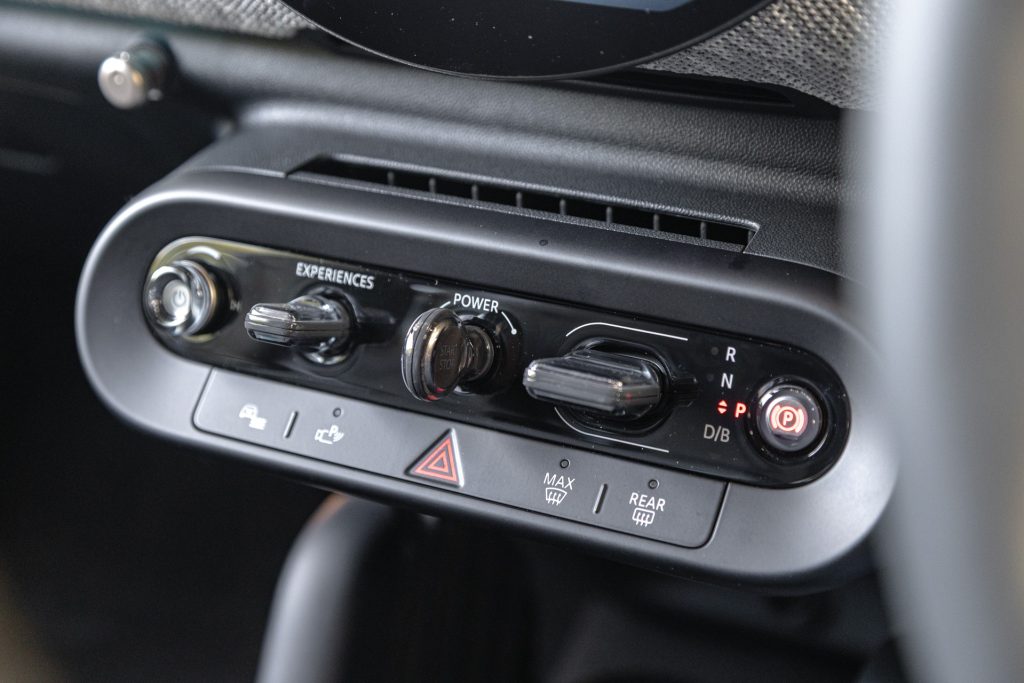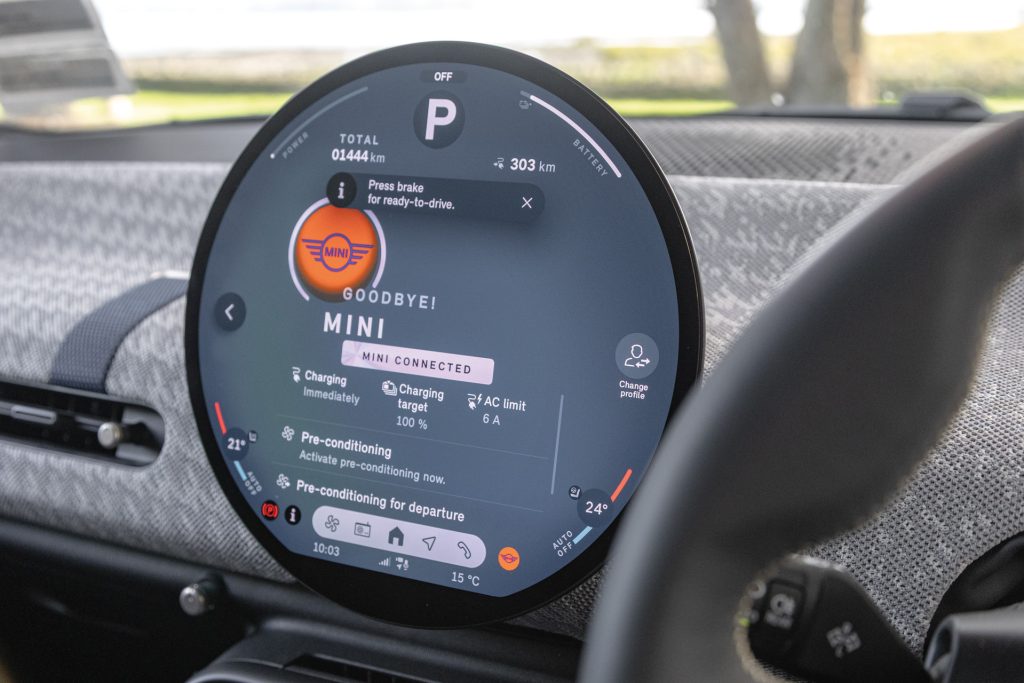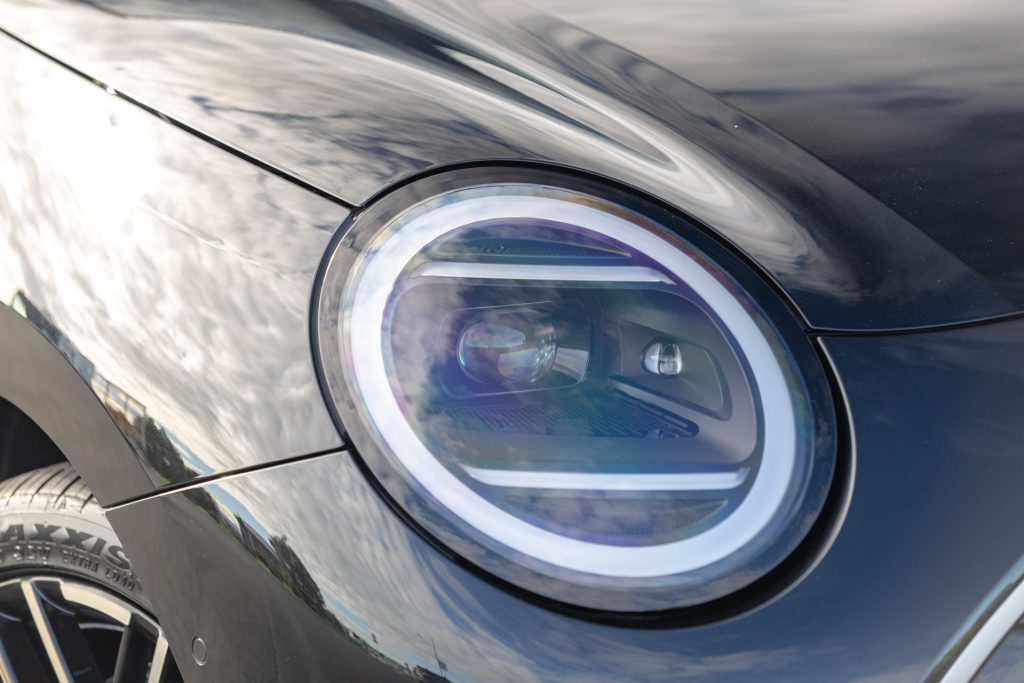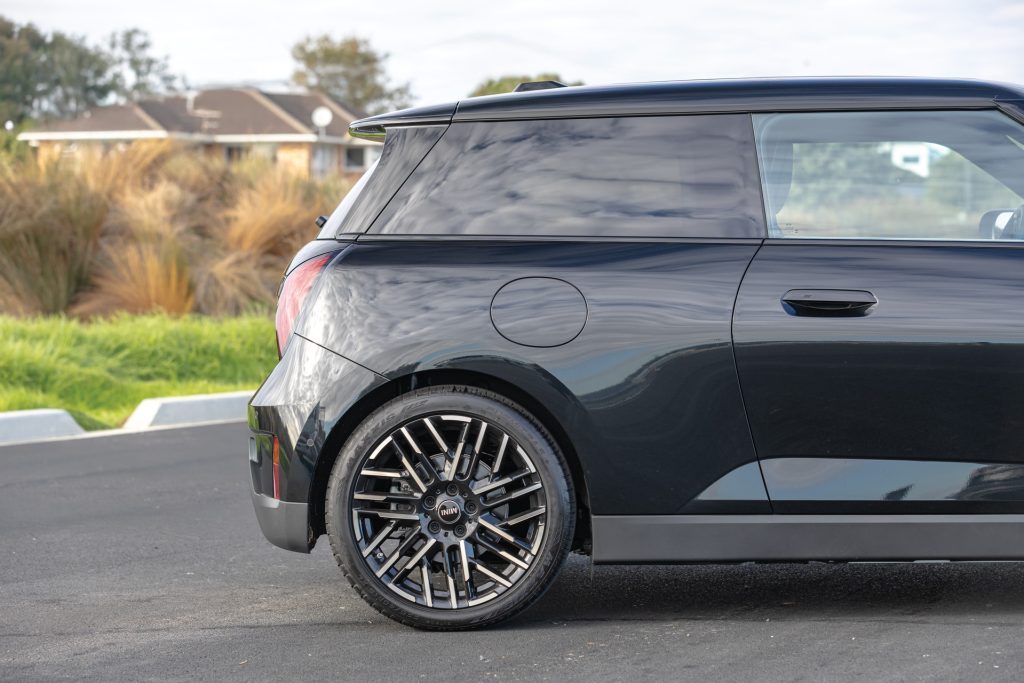2025 Mini Cooper SE Review
Words: Peter Louisson | Photos: Alex Schultz
Mini’s first electric Cooper went well enough but couldn’t roam that far out of town. The new SE remedies that.
The second-generation of the Mini Cooper Electric is here, in a couple of guises; the E with a 41kWh (37kWh usable) battery and the SE that you see here with a 54kWh battery pack (49 usable).
Contrast that with the original 2020 version that had a 32.6kWh pack (29kWh usable). It offered a range that Mini claimed was around 230km but only in town. Used beyond city limits, and you’d be lucky to see 180km. That’s similar to Mazda’s MX-30 for range, and that expensive experiment lasted just two years.
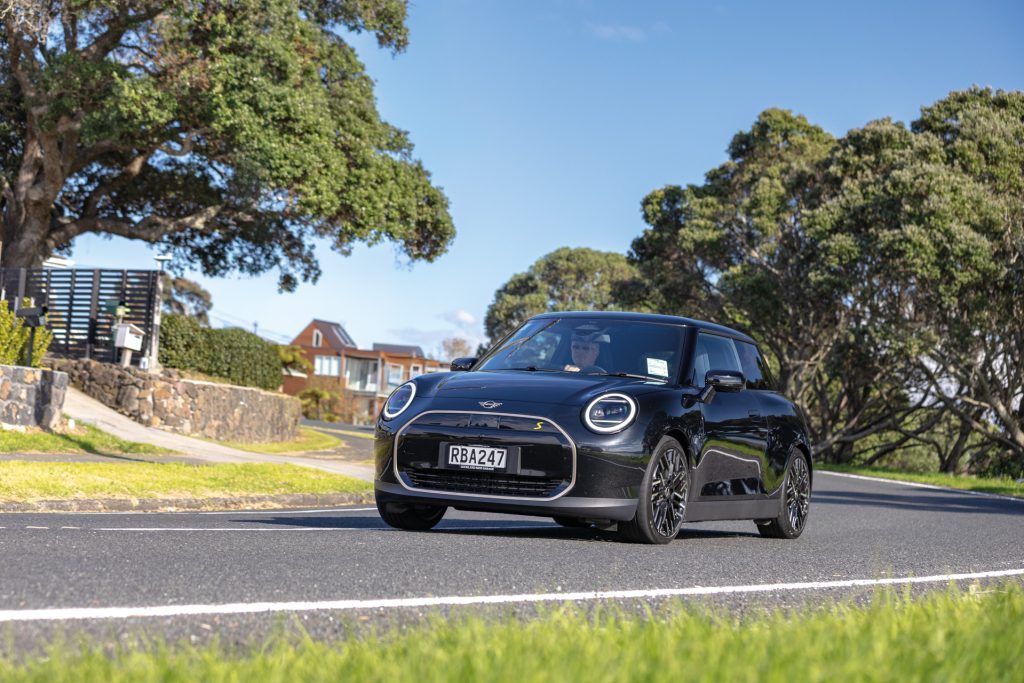
Equally, no surprise that the new electric Mini Cooper comes with either a modest battery (still bigger than before) or an acceptable size one in the SE and decent enough range (up to 402km WLTP). While this is primarily an urban car, it’s one that Mini says has the kind of dynamics that make you want to take it beyond the city. So then you need a bit of range to get you there and back again.
The bigger version has more power too. Yes, it is more expensive by $6k than the E ($61k vs $67k) but that’s probably the best $6k you will ever commit to. Moreover, with a modestly sized battery pack of around 50kWh you can replenish from 65 to 90 per cent odd overnight using a 2kW portable charger. Zero to 80 per cent takes roughly five hours using an 11kW wallbox. A 10-80 rezip on a 50kW DC unit takes about half an hour. The point here is that charging is a chore and a bore so the less often and the less time taken the better.
As mentioned dynamics are key here, so big battery packs are out of the question. But as lithium-ion tech slowly advances, the batteries tend to be more energy dense without growing in size. Not quite the same for the car overall, however; the original we tested in 2020 was 1404kg, this latest, admittedly in SE guise with more gear and a bigger battery, is now 1680kg. It has more range of course but the performance increment isn’t huge. Back then with a 135kW/270Nm motor, it could get to 100km/h in 6.85sec. Now, with 160kW and 330Nm it did the same thing only half a second quicker, and that’s much the same with the overtake, at 4.0 vs 4.6sec. However, with at least 50 per cent more range, no-one will feel hard done by, particularly when it’s only $7k more than before.
If you’re just not up for an electric Mini Cooper, you can still buy a range of petrol variants, with the three-pot 115kW/230Nm 1.5 kicking off at $49,990. This also comes in a better specified Favoured flavour for a few thousand more. The $56,990 Cooper S gets a motor more befitting of a go-kart car, its 2.0 150kW and 300Nm motor giving it a sprint time of 6.6 seconds. There’s still the JCW hot-shot as well, costing a few thou less than the Cooper SE.
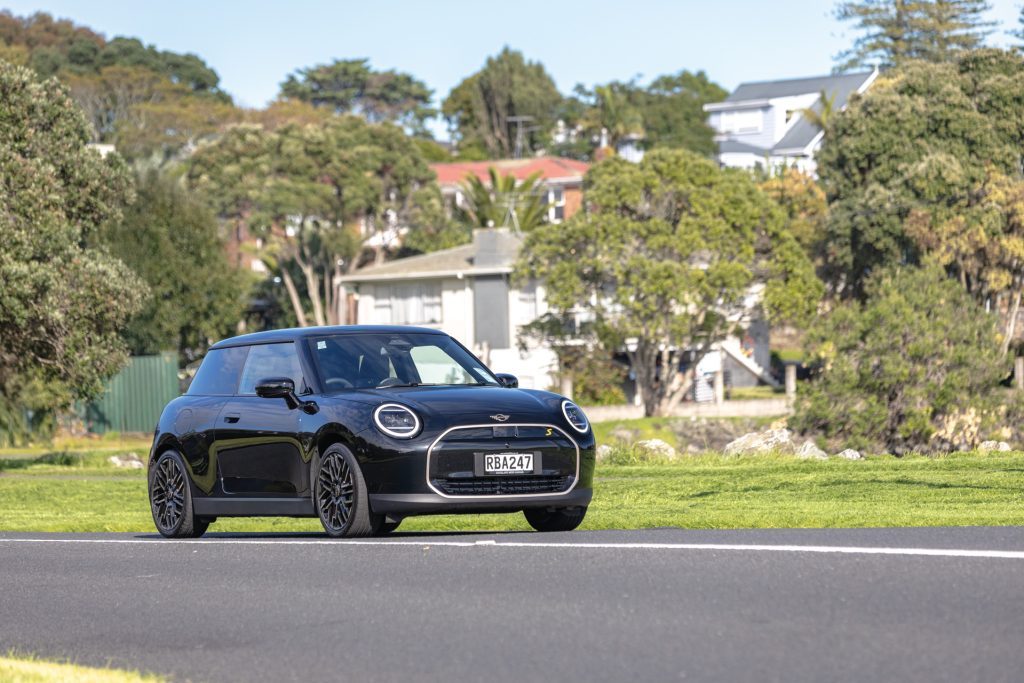
Mini looks with better tech
This car is still a front driver, now with a 160kW and 330Nm motor. It has a bewildering range of drive modes, borrowed from the BMW mode book. But it’s really only Eco, Normal and Sport that matter. The latter is accompanied by a ‘wahoo’ exclamation from the speakers when selected and that wears thin. Normal will do for the most part, as usual. There are three regen settings too, low, medium and high. Well, four if we’re counting, the Adaptive mode. We preferred the high setting which is similar to single-pedal driving, only without being so abrupt.
There’s a new look too, better in that you can scarcely pick it apart from the ICE power variants. The original electric Mini featured a horizontal yellow line across the grille, signifying the electric innards. That’s gone, and in its place a couple of yellow S badges instead. The larger mainly solid grille and low ride height impart a real impression of width, like it’s set to pounce.
There’s still the iconic Mini Cooper shape, the big round LED headlights, and abbreviated overhangs. It remains recognisably Mini, something that hasn’t really changed from the model’s inception in 1959. It’s much the same as the 911 in that regard then.
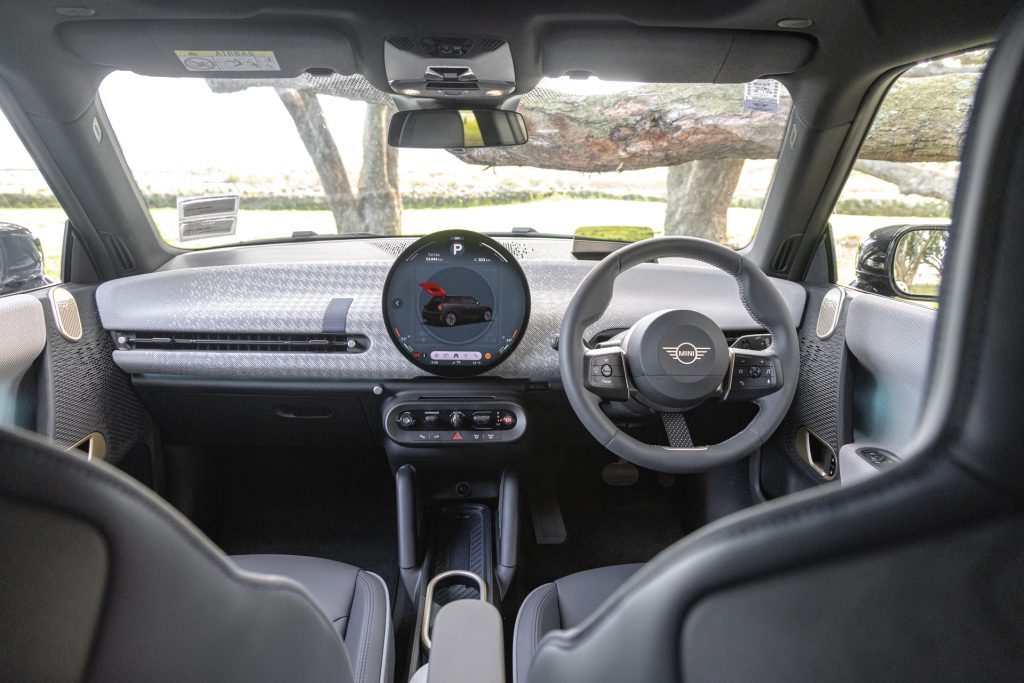
Inside, there’s the still iconic circular IFT and control screen, now a 240mm OLED offering for even greater clarity. Like all central controllers, this takes time to master. But there are several buttons on the dash that make the process simpler. One of these is the start-stop button, which some EVs don’t have. We prefer this, especially as the Mini detects the key approaching and unlocks automatically. Same for locking; just leave and it does that for you. Alongside is a wee lever for D and R, and a button to the right is for P. Towards the left is the Experience button (drive modes then) while a little below those is another that is a shortcut to the menu that changes driver assistance stuff. And there’s a shortcut to nixing lane keeping as well. Serious drivers may want to as they go about straightening curvy roads.
This bongs a few times at you gently, quietly if it detects you’re exceeding the local speed limit. You can cancel it if you want in the control screen. And it stays off.
Mini makes use of recycled plastics and the like – there’s no leather or chrome – so much of the dash and door cards are covered in a fabric-like textile. What look like leather-clad seats aren’t real then, vegan something or other.
Harder charging
The latest Cooper E rides on a new dedicated EV platform co-developed by BMW so benefits from a touch more room in the rear. But the 210L boot remains marginally useful. Think grocery shop up for two. Splitfold the rear seats to enlarge it to 800L (69L more than before) and it swallows oodles of gear.
The dynamics are even better than before, as the battery is between the axles for a better weight split. There’s generous steering heft but it’s still the darty thing it used to be. Ride will seem firm initially but at open road speeds it makes lots of sense. And even at town pace it’s not sharp; good seats help.
It’s premium priced for a weenie but comes with premium items, like powered and heated leatherette seats with lumbar pump, seat memories and a massage function. The sports wheel is heated but the rim is a bit fat, like BMW items. Overhead is a full length fixed panoramic roof with ambient lights around the edge and a powered slide beneath. There’s also one of the polycarbonate head-up displays, this one pretty good for clarity. And there’s stop and go for the adaptive cruise while smartphones integrate wirelessly and there’s a surround camera system for safer parking. Harman/Kardon supplies a premium sound system too. And there are enough crash smarts for a five-star ANCAP result.
So it’s a properly sensible update here, especially the SE. Somewhere out on the far horizon, the next-generation Minis will be rear or AWD, as they adopt BMW’s Neue Klasse platform. The Gen6 800V architecture will also mean even more range and quicker charging.
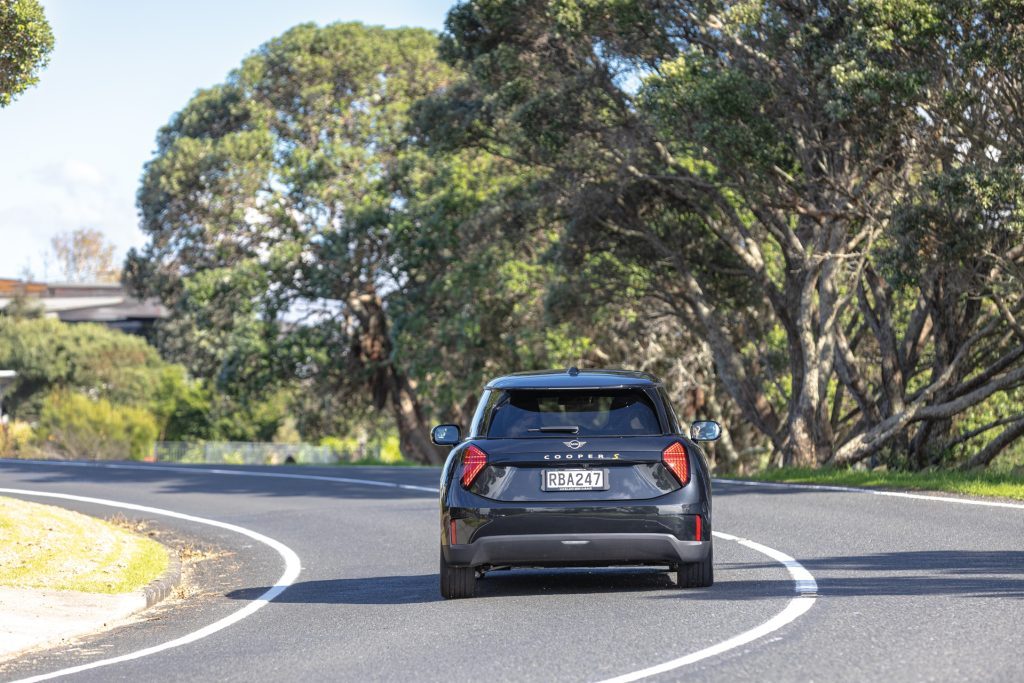
Mini Cooper SE
$66,990 / 14.8kWh/100km / 0g/km
0-100 km/h 6.33s
80-120 km/h 4.02s (114m)
100-0 km/h 38.96m
Speedo error 98 at an indicated 100km/h
Ambient cabin noise 74.4dB@100km/h
Motor output 160kW/330Nm
Battery 49.2kWh
Range 382km
Drivetrain Single-speed auto / FWD
Front suspension Mac strut / swaybar
Rear suspension Multilink / swaybar
Turning circle 10.8m (2.2 turns)
Front brakes Ventilated discs (335mm)
Rear brakes Discs (280mm)
Stability systems ABS, ESP
Safety AEB, ACC, BSM, LDW, RCTA, ALK, AHB
Tyre size f/r-225/40R18
Wheelbase 2526m
L/W/H 3858 / 1756 / 1460mm
Track f-1521mm r-1524mm
Luggage capacity 210-800L
Tow rating 500kg (750kg braked)
Service intervals Condition based
Scheduled servicing 3yrs
Warranty 5yrs / 100,000 km
ANCAP rating ★★★★★ (2025)
Weight (claimed) 1680kg
